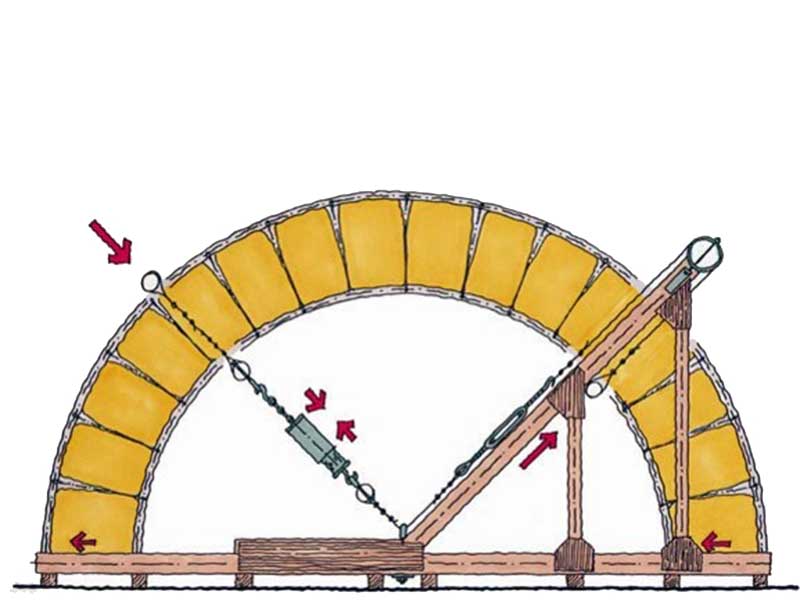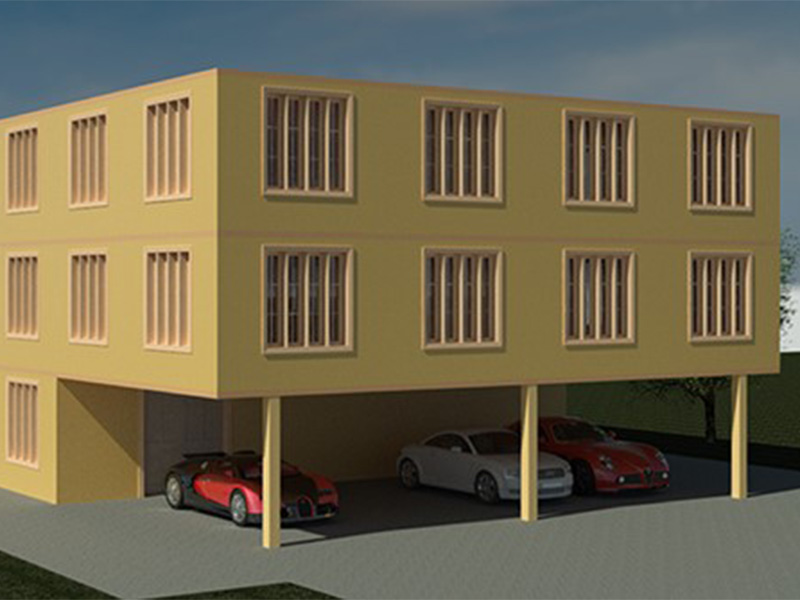
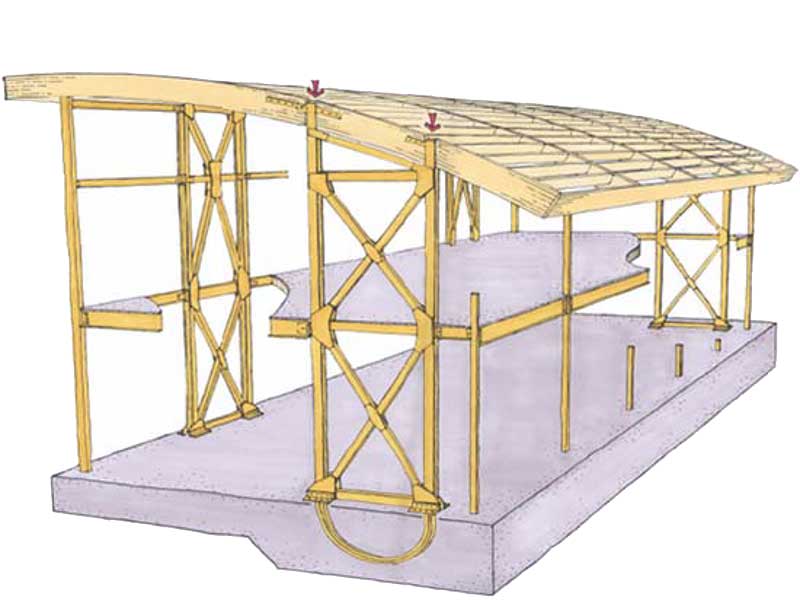
Credit:
- David Mar
Published: 9th U.S. National and 10th Canadian Conference on Earthquake Engineering, 2010
This paper presents design examples of frame and wall buildings that use mode-shaping spines to control drift by ensuring a global tilting mode while precluding story mechanisms. The improvements to seismic performance are significant and cost-effective with several projects achieving savings in comparison to conventional systems. Performance Based Design frees designers from the constraints of a force-based code. This allows the synthesis of the overall project goals – the improvement of seismic resistance, the reduction of first costs, the protection of architectural skin, and the reduction of damage and loss of use.
In addition to mode-shaping deformation control, several examples employ rocking and re-alignment strategies. A cantilever wall with a flexural mechanism at its base is an obvious example. Rocking steel frames and mast frame examples are also presented. Restoring force characteristics are provided in the form of post-tensioning reinforcement to re-align buildings back to plumb after an earthquake.
Related Research

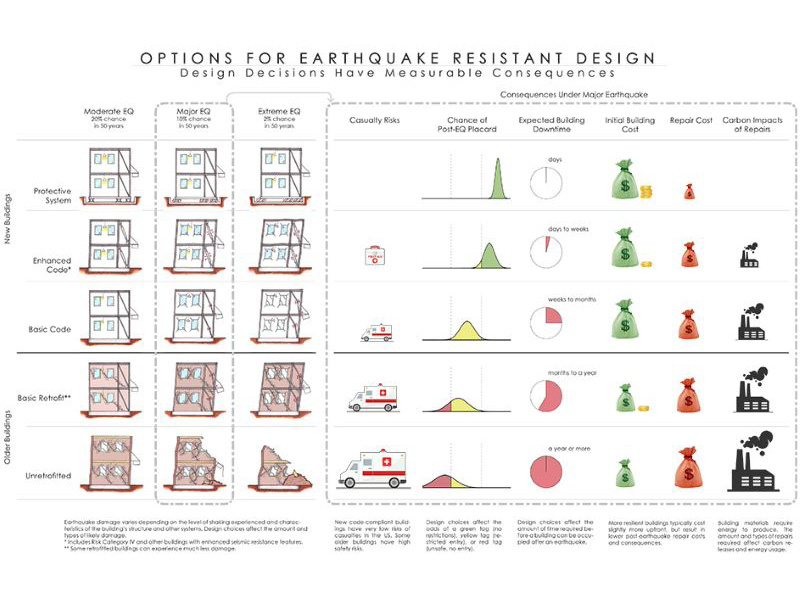
FEMA P-58: Options For Earthquake Resistant Design
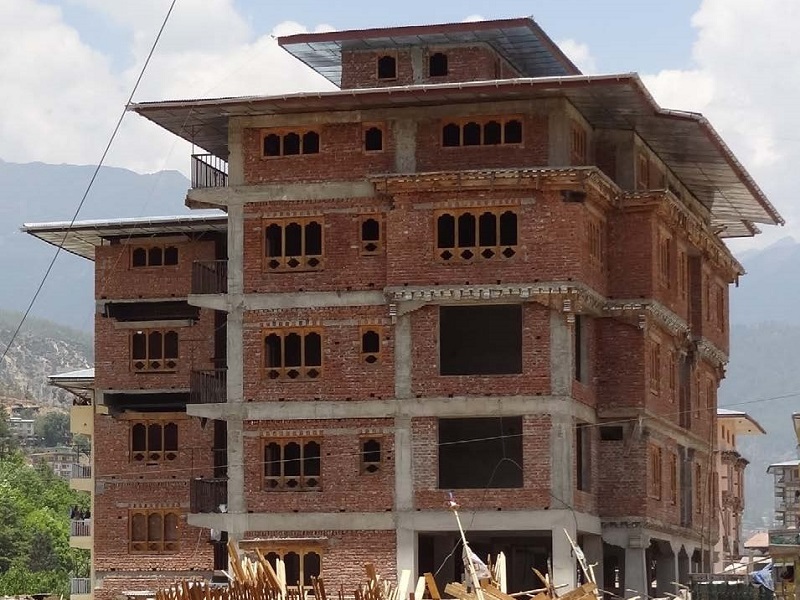
Conceptual Seismic Design Guidance for New Reinforced Concrete Framed Infill Buildings

Earthquake Safety Prioritization of School Buildings Using Performance-Based Risk Assessment in Kyrgyz Republic
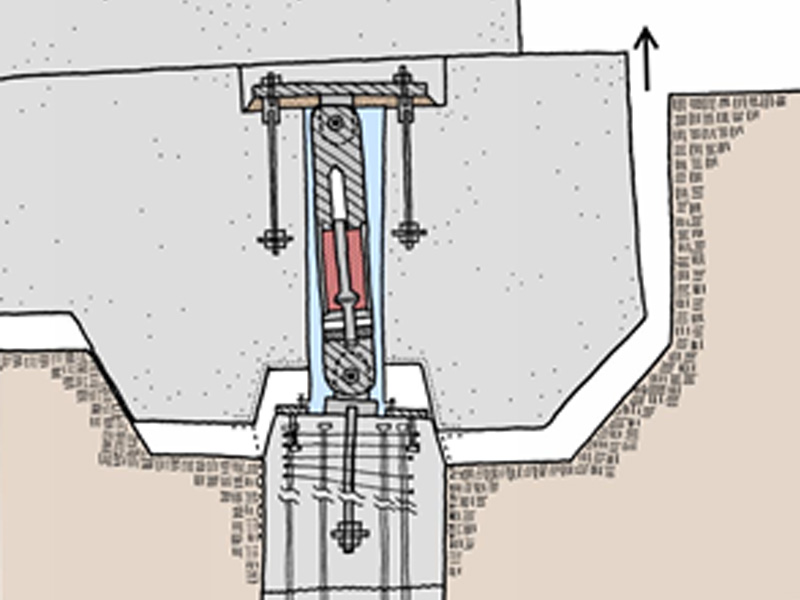
Casa Adelante: Rocking Mat Foundation System
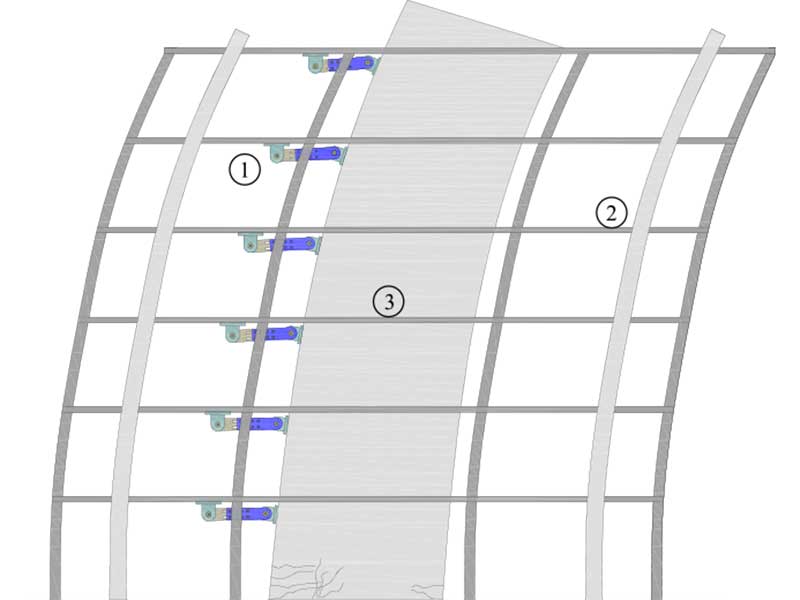
Development of Deformable Connection for Earthquake-Resistant Buildings to Reduce Floor Accelerations and Force Responses
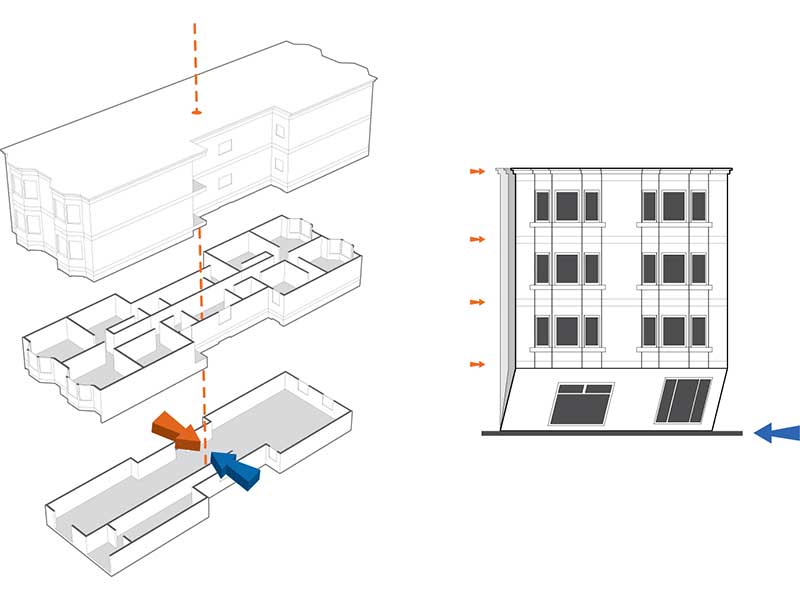
FEMA P-807: Guidelines for Seismic Retrofit of Weak-Story Wood-Framed Buildings

Design Examples Using Mode Shaping Spines for Frame and Wall Buildings
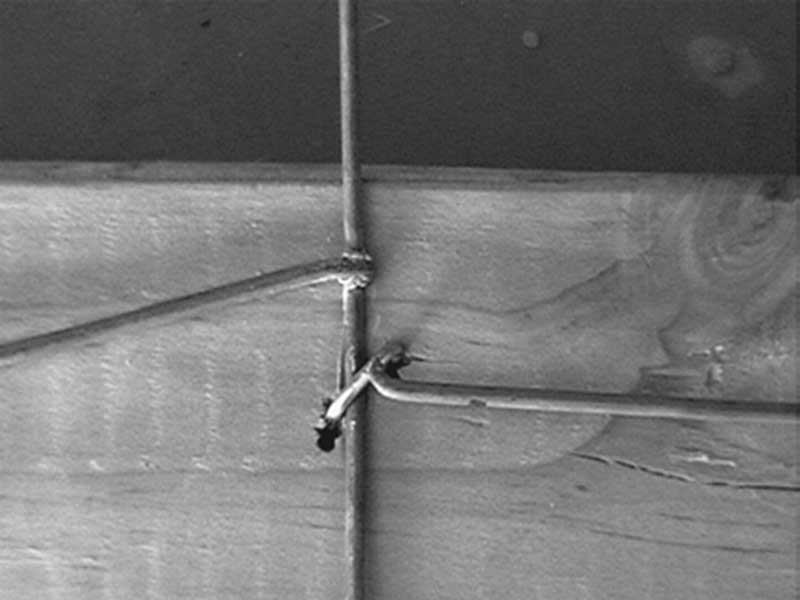
Recommended Mesh Anchorage Details for Straw Bale Walls
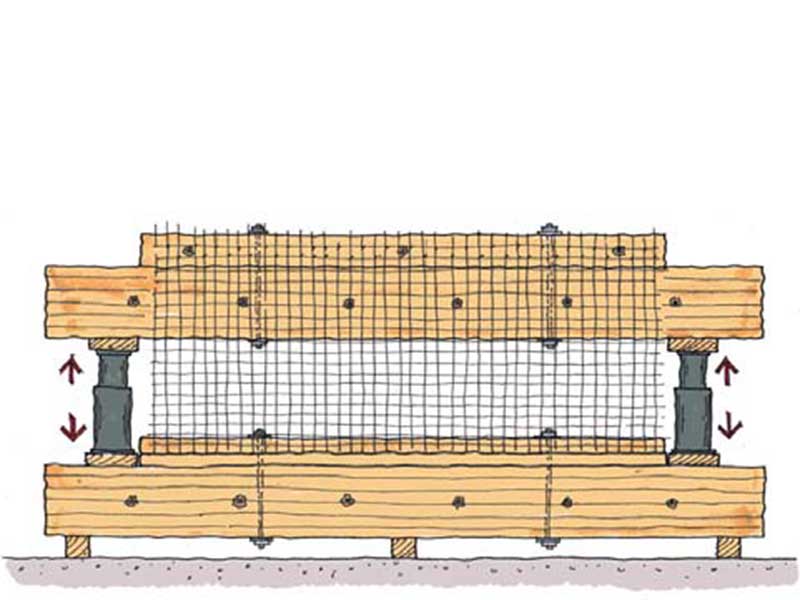
Reversed Cyclic In-plane Tests of Load-bearing Plastered Straw Bale Walls
